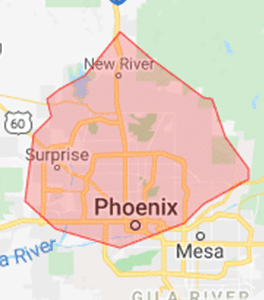In the water filtration industry, Reverse Osmosis (RO) systems are among the most popular for private homes and businesses. The RO system’s distinctly compact design allows for an easy installation beneath any kitchen sink and the use of multiple pre/post filters and a unique RO membrane to ensure only safe, clean water passes through. As complicated as it may seem, the simple fact is RO systems give property owners access to a reliable supply of fresh water for limitless hydration and culinary applications.
Reverse Osmosis systems function similarly to how spring water purifies organically using the natural environment. Except, instead of water passing through layers after layer of rock, sand, and other wild elements, water passes through specially designed filters made to safely mimic the same process. The first filter layers, typically made from carbon and sediment, are the most porous to effectively trap larger visible contaminants. Each layer then gets less and less permeable until finally the water is forced through the final RO membrane in a process known as reverse osmosis, which removes over 90% of the remaining impurities before storing the clean water in a reserve tank until it’s needed. At which point it goes through another filter before exiting the tap.
RO systems are a practical long-term solution for ensuring your property always has enough clean drinking water, requiring minimal maintenance to keep in peak condition year-round. All you need to do is make sure you change your pre/post filters at least twice a year and replace the membrane every 2-5 years. Even if the package for your filter claims it will last up to 12 months, change it every 6. Arizona’s high temperatures create an ideally warm, moist environment for bacteria to spread, but regular filter changes will prevent this and help prolong the life of your RO membrane and filtration system as a whole. Just make sure you’re using your RO system regularly.
Not using your filtration system often enough can lead to big problems. You might think it would be helpful as in, the less you use it, the longer it will last, but the opposite is true. Not using your RO system means that there’s stagnant water left in your reserve tank for a long time, allowing bacteria to grow and the system to become weak and susceptible to leaks and other damage. If you want to keep your RO system healthy, use it often so you can keep water flowing through it as much as possible, the same way a natural spring never stops flowing through the mountains. You will still need to change your filters, but likely not as frequently.
Before you can worry about changing your filters, though, you need to choose the right RO system for your property. If you choose a proprietary RO, you may be limited when it comes time to replace various parts and filters since you will only be able to purchase components from a single manufacturer at a set cost. Standard ROs are a little easier to maintain since most parts are universal and easily accessible. However, you miss out on some of the advantages of using specialty filters and parts that enable you to minimize water waste, balance PH levels, add minerals to your water, and more.
If you’re not sure what kind of RO system is best suited for your property, check out our water treatment page or our blog post on the Reverse Osmosis systems we carry. Tru Comfort Heating and Cooling has always been a place for home and business owners to find the answers and support they need. Our knowledgeable specialists will help you find anything you’re looking for. Reach out to make an appointment anytime by calling Tru Comfort Heating and Cooling today at (602) 499-7855, or simply fill out the form in the sidebar.


 How To Clean Your Gas Furnace
How To Clean Your Gas Furnace


Connect With Us!